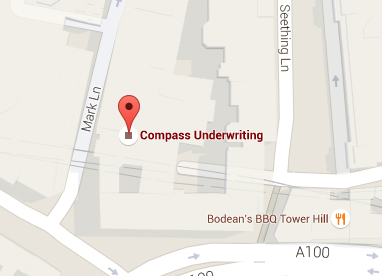Working with Motor Insurers and Intermediaries
We have recently developed a first-party accident only version of our plans which can be arranged and sold as a voluntary bolt-on to motor policies.
Car accidents can cause many different injuries, to virtually any part of the body, depending on the circumstances of the crash and the severity of the impact.
Motoring accidents can cause a variety of serious personal injuries and death. Most people hurt in a car crash suffer impact injuries, from slamming into a part of the vehicle upon colliding with another vehicle or object, or by being hit by unsecured cargo that becomes airborne in a crash.
Other common car accident injuries are cuts and tear injuries from broken glass and torn metal. In a rollover accident, a car’s occupant can be tossed around and injured from all directions or can even be ejected from the vehicle.
In the United Kingdom, many companies offer the core standard personal accident coverages such as accidental death and loss of sight with comparatively low limits.
Benefits under these personal accident bolt-on plans tend to include standard personal accident benefits (accidental death, loss of sight and PTD) which respond only to catastrophic injuries with relatively low limits.
Our motor accident medical recovery insurance policy would pay in the event of any medical procedure following a motor accident, By comparison to personal accident policies which for example would pay for the loss of a leg, our policy would pay for injuries such as a broken leg.
A road traffic accident would often not always involve a personal accident claim but could more easily involve a medical procedure in A and E such as treatment for a broken leg.
It is these “non-covered” incidents that MCP is uniquely positioned to cover using its proprietary benefit schedule which pays cash benefits according to normal recovery times.
Injuries sustained by passengers of an insured can also be included in the plan.
FREQUENT CAR ACCIDENT INJURIES
Impact injuries and injuries from broken glass or sharp parts torn away from the body of the car can affect virtually any part of a driver’s or passenger’s body.
THEY INCLUDE:
- Brain injuries. A blow to the head or a piercing head injury can damage the brain, an injury known as traumatic brain injury (TBI). A TBI may be mild, like a concussion that heals on its own after a few weeks of rest, or it can be a severe injury that impairs critical functions such as speech, vision, concentration, memory and emotional control.
- Other head injuries, such as eye injuries, which can result in partial vision loss or blindness; injuries to the ear that result in loss of hearing; facial or jaw fractures; and dental injuries, including loss of teeth.
- Neck and back injuries. Whiplash is the most common injury suffered in car accidents. It is a neck and/or back injury in which the neck stretches and quickly snaps back into place, because the impact of a wreck has caused the car to either suddenly stop or accelerate. Whiplash can damage the vertebrae, ligaments or disks, or the spinal cord itself, in the neck and back. This can cause paralysis or other loss of function in one or more limbs or larger portions of the body. Even less severe neck and back injuries can cause chronic pain that significantly reduces the quality of life.
- A neck injury may also be the result of a blow that crushes the larynx or trachea. A broken neck suffered in a car accident could result in instant death.
- Chest injuries. The crushing impact of a collision can break ribs and/or the sternum (breast bone), particularly if a driver or passenger was not restrained by seat belts. This severity of chest injuries has been greatly reduced by the standard placement of airbags in dashboards and steering wheels, but fractures and injuries to organs still occur.
- Diaphragm rupture (a tear of the muscle across the bottom of the rib cage that is crucial to respiration) is a common result of blunt or penetrating trauma to the trunk or lower chest.
- Pelvis /abdominal injuries. Compressive pelvic injuries (hip fracture) and injury to abdominal organs are common in motor vehicle accidents. The liver, spleen and kidneys are frequently injured in front- and side-impact collisions.
- Leg and knee injuries. Most leg and knee injuries in car accidents are impact or crush injuries caused by smashing into a part of the car. This can result in wounds that range from contusions (bruises) to a fracture or multiple fractures. Knees are also susceptible to meniscus tear (tearing of cartilage in the knee) if they are abruptly twisted or turned.
- Foot Injuries. Ankles, feet and toes can easily be strained, sprained or broken (fractured) in a car accident.
- Feet, toes and other limbs can also be severed, though this is a more common injury in motorcycle accidents.
(Source http://www.maguirelawfirm.com/Motor-Vehicle-Accidents/10-Most-Common-Car-Accident-Injuries.shtml)


